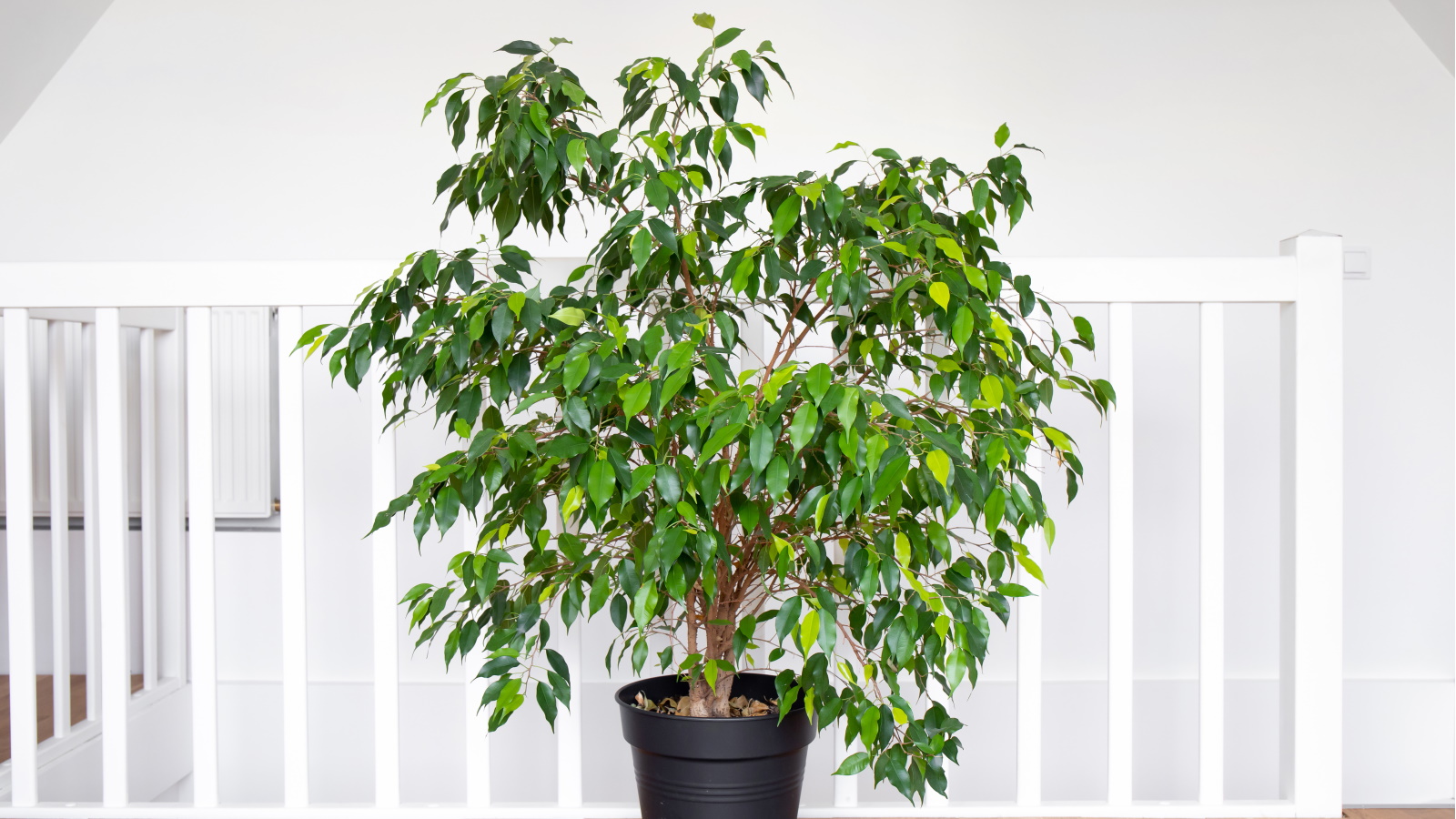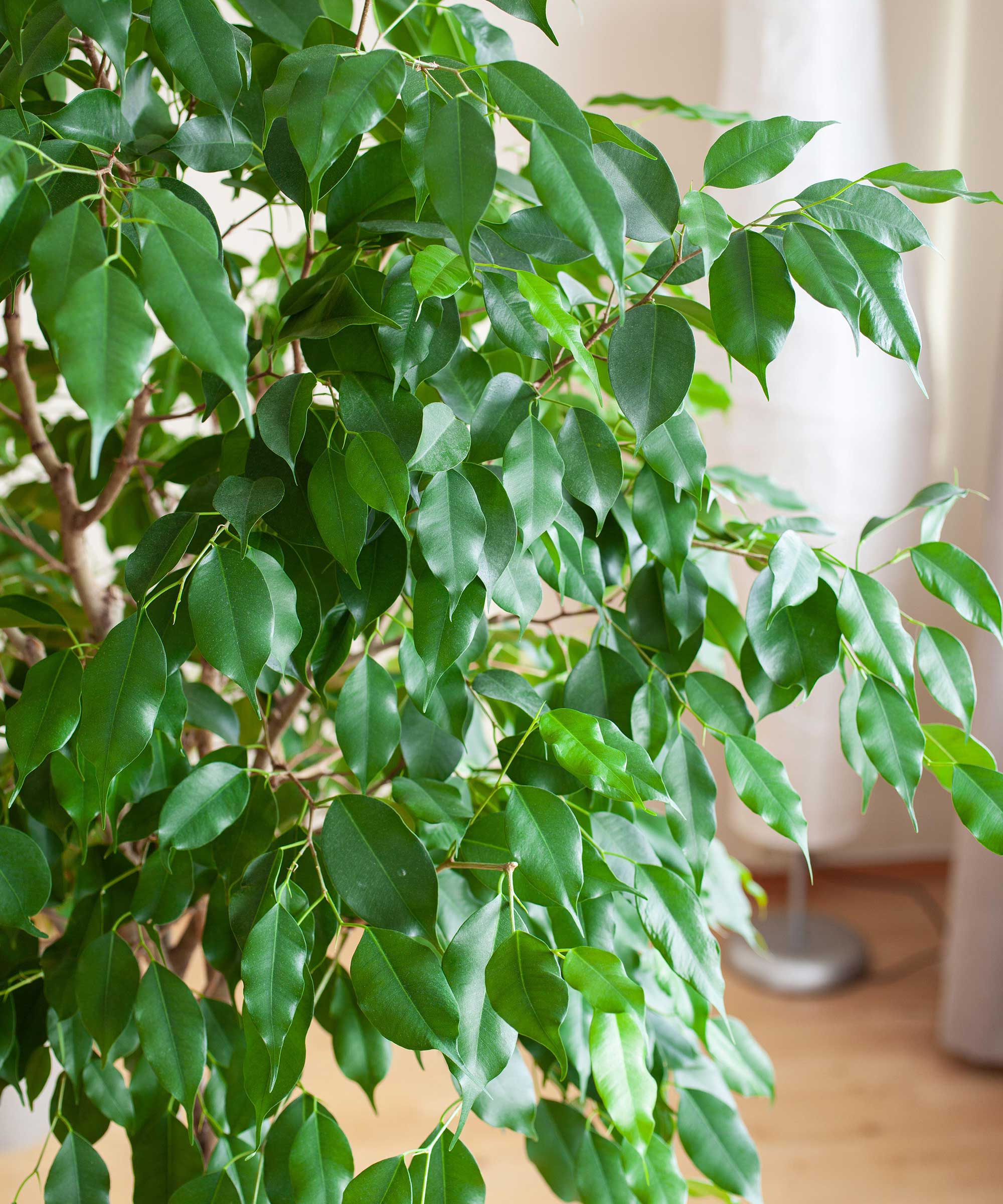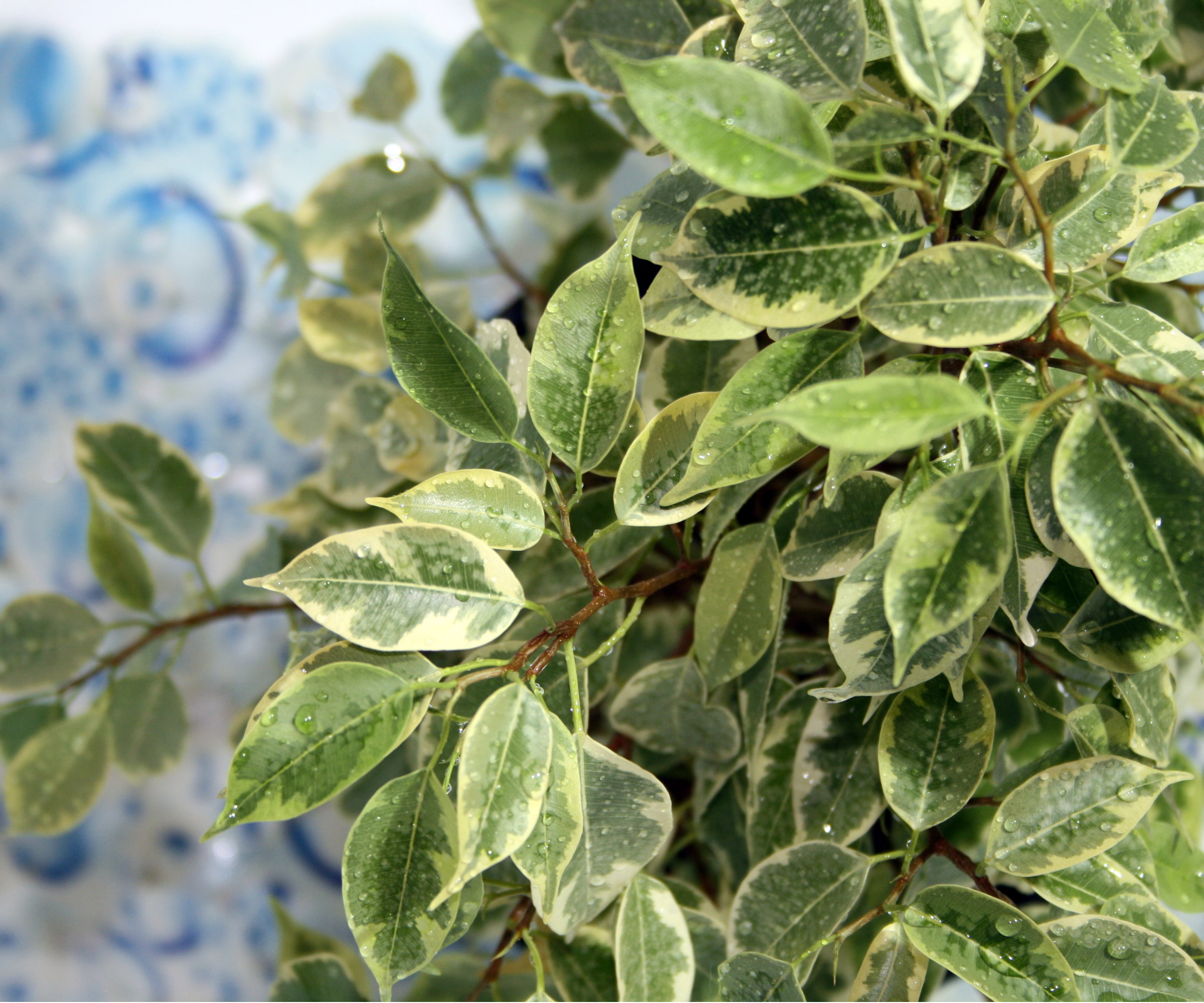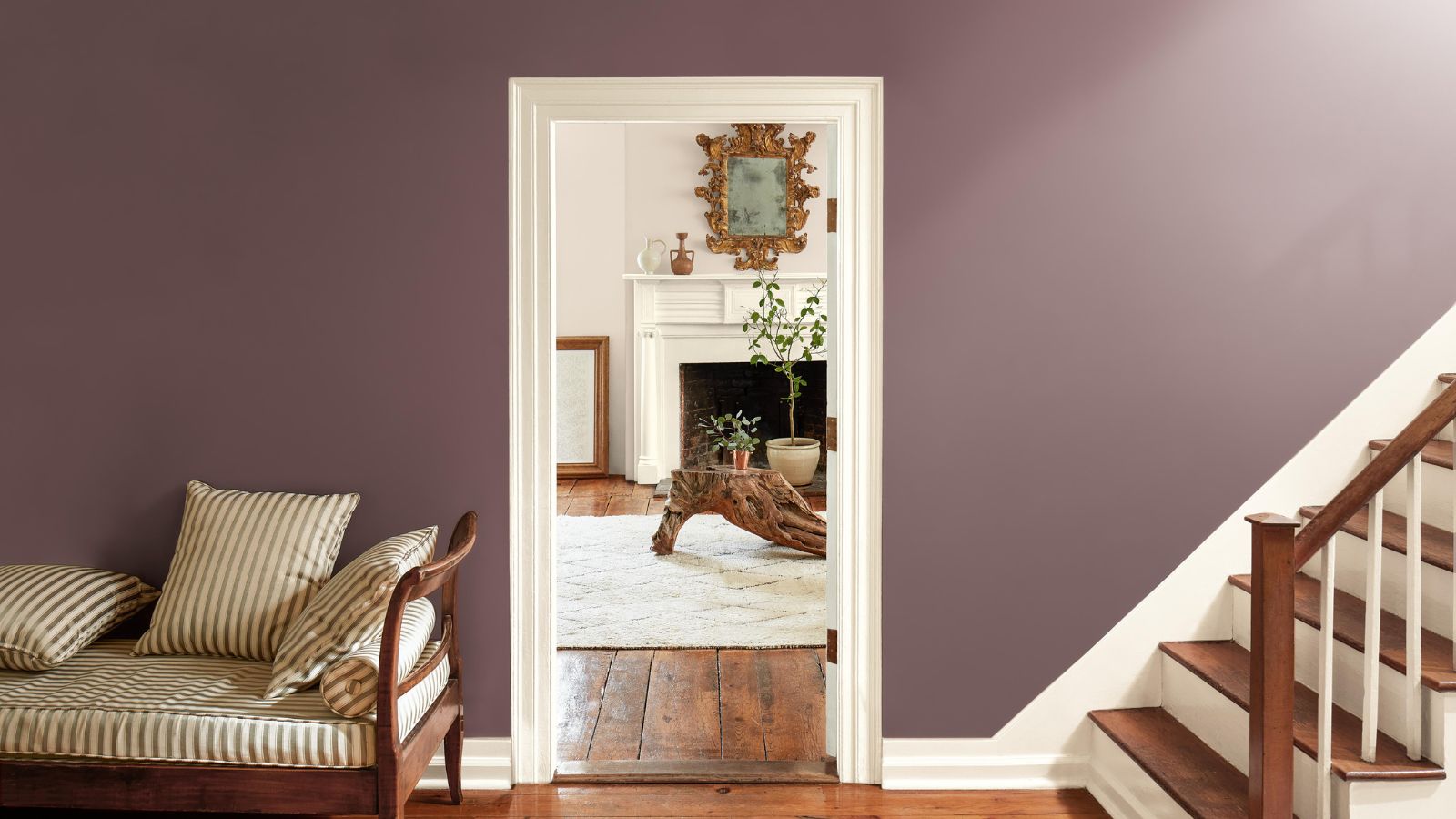Why is my weeping fig dropping leaves? 3 causes and solutions
These indoor trees are prone to leaf drop, but there's usually a logical explanation behind it


If you dream of having an indoor jungle, then growing a weeping fig in your home is a no-brainer. These trees are the perfect choice for a statement houseplant, thanks to their with full foliage and longevity - weeping figs often thrive for decades as houseplants.
Caring for a weeping fig indoor plant is fairly straightforward, as its a low-maintenance tree to grow indoors. However, it's not uncommon for a weeping fig, or Ficus benjamina, to drop its leaves. While there are plenty of non-concerning causes, it's also possible your weeping fig is dropping its leaves due to improper growing conditions.
I've spoken with houseplant experts to find out more about why a weeping fig might be dropping its leaves and they noted three main causes - here's everything you need to know.

3 reasons why your weeping fig is dropping leaves
Weeping figs are tropical indoor plants, native to regions of Asia and Australia. They can be grown outdoors across US hardiness zone 10-12, but are much more popular as indoor plants. Leaf drop shouldn't always be a cause of concern for weeping figs, however if your weeping fig is suddenly and repeatedly loosing leaves then it could be due to one of the following reasons.
1. Your weeping fig is growing in poor light

If you have a struggling houseplant, lighting is always the first thing to check. There are plenty of indoor low-light plants and plenty of indoor plants for direct sunlight, but weeping figs prefer to be somewhere in the middle.
'Weeping Figs prefer bright, indirect light, and although they can tolerate slightly lower light levels, too little light might cause them to shed leaves,' says Vladan Nikolic from Mr. Houseplant.
A weeping fig tucked away in a dark corner of your home is unlikely to show off full foliage - it's best to adjust this by moving it somewhere brighter.
'If you want to have a plant with lush foliage, keep it near the window which gets most sunlight,' advises Vladan. 'However, make sure the plant is sheltered from harsh midday sun to prevent leaf scorch,' he adds.
During winter and darker days, you might choose to use grow lights for houseplants to provide your weeping fig with sufficient light levels - this grow light from Amazon has an adjustable stand so you can position it above your ficus tree.

Vladan Nikolic is a houseplant expert with over 10 years of experience. He is the founder of the houseplant care blog Mr. Houseplant and is a social media influencer for houseplants with over 500,000 followers.
2. You're incorrectly watering your weeping fig

Perhaps the most common indoor plant mistake, watering your houseplants incorrectly is easy to do. Too little or too much water can have adverse effects on your weeping fig.
'Both overwatering and underwatering can cause a weeping fig to drop leaves,' says Lindsey Chastain, founder of The Waddle and Cluck blog. 'They prefer the soil to dry out a bit between waterings, but not completely dry,' she adds.
Soil that is too wet can cause your fig to suffer from houseplant root rot, while periods of drought can stress your weeping fig.
'A good rule of thumb is to water when the top inch of soil feels dry to the touch, but make sure the pot has good drainage,' advises Lindsey.
You can use your finger to feel the moisture levels of your soil, or use this soil moisture meter from Amazon.

Lindsey Chastain, a dedicated homesteader and skilled writer, is the driving force behind The Waddle and Cluck, a platform that celebrates sustainable living, gardening, and responsible farming. As half of the husband-wife team making The Waddle and Cluck thrive, Lindsey's expertise shines through in her engaging narratives about farm life and the beauty of rural living.
3. Seasonal changes are causing leaf drop

Another common cause of weeping fig leaf drop is the changing seasons. This isn't necessarily a cause to be concerned about, but it's worth understanding what you can do to encourage new growth when this does happen.
'Weeping figs tend to drop leaves in fall and spring at the change of the seasons. This happens because these plants are sensitive to any change in their environment,' explains Vladan. 'Seasonal changes cause light level and temperature fluctuations, which can lead to leaf drop,' he adds.
Just like a rubber plant dropping leaves, sudden changes in temperature as the seasons change can cause leaf drop. The ideal temperature range for a weeping fig is between 65 and 85°F. However, your weeping fig will make a recovery and grow new foliage if you make sure to keep providing it with optimal care through the seasonal changes.
It's also worth noting that age can also cause leaf drop. 'Weeping figs shed leaves due to age. Older lower leaves are shed so the plant can have enough energy for new and healthy growth,' says Vladan.
'This happens regularly and gradually. However, if the leaf drop is sudden and dramatic, it’s probably caused by inadequate growing conditions,' he adds.
FAQs
Do weeping figs need lots of humidity?
Like other houseplants native to tropical regions, weeping figs enjoy higher humidity levels.
'The optimal humidity levels are between 50 and 75%. You can raise humidity levels with a humidifier or a humidity tray filled with water and pebbles,' says Vladan Nikolic from Mr. Houseplant.
As Vladan notes, there are plenty of ways to increase humidity for indoor plants. Not getting the humidity levels right for your weeping fig may cause its leaves to droop and drop off, among other problems.
How do you revive a weeping fig that has dropped its leaves?
To revive a weeping fig that has dropped its leaves, you need to first identify the cause. If its growing in improper conditions, you should adjust them accordingly. 'Revive a weeping fig that is dropping leaves by ensuring you are providing the plant with proper watering, lighting and temperatures,' advises Julie Bawden-Davis, indoor plant expert at Healthy Houseplants. Continuing to give your weeping fig the optimal care and protecting it from sudden environmental changes will prevent further from leaves dropping off.
Once you've got to the bottom of your weeping fig leaf drop problem, make sure to adjust growing conditions accordingly to prevent further leaf drop. This might involve moving your weeping fig, so why not try styling your houseplants to incorporate them into the aesthetic of the room they're now living in?
If your weeping fig needs quite a drastic change (e.g. moving from a dark corner to a brighter room), take care to not send it into shock. For example, you can try moving it to a slightly brighter spot for a week or so before moving it to its ultimate position.
Sign up to the Homes & Gardens newsletter
Design expertise in your inbox – from inspiring decorating ideas and beautiful celebrity homes to practical gardening advice and shopping round-ups.

Tenielle is a Gardens News Writer at Homes & Gardens. She holds a qualification in MA Magazine Journalism and has over six years of journalistic experience. Before coming to Homes & Gardens, Tenielle was in the editorial department at the Royal Horticultural Society and worked on The Garden magazine. As our in-house houseplant expert, Tenielle writes on a range of solutions to houseplant problems, as well as other 'how to' guides, inspiring garden projects, and the latest gardening news. When she isn't writing, Tenielle can be found propagating her ever-growing collection of indoor plants, helping others overcome common houseplant pests and diseases, volunteering at a local gardening club, and attending gardening workshops, like a composting masterclass.
-
 I always get my small space storage from Wayfair – and these discounted $35 stackable Martha Stewart storage boxes are the perfect fix for my tiny vanity
I always get my small space storage from Wayfair – and these discounted $35 stackable Martha Stewart storage boxes are the perfect fix for my tiny vanityI'm going vertical for tiny space storage success with this Early Way Day 2025 bargain
By Punteha van Terheyden
-
 These are the colors that just don't work with purple – 4 shades to sheer clear of if you want to bring this on trend color into your home
These are the colors that just don't work with purple – 4 shades to sheer clear of if you want to bring this on trend color into your homeWhy some colors sabotage purple, and how to get it right every time.
By Sophia Pouget de St Victor